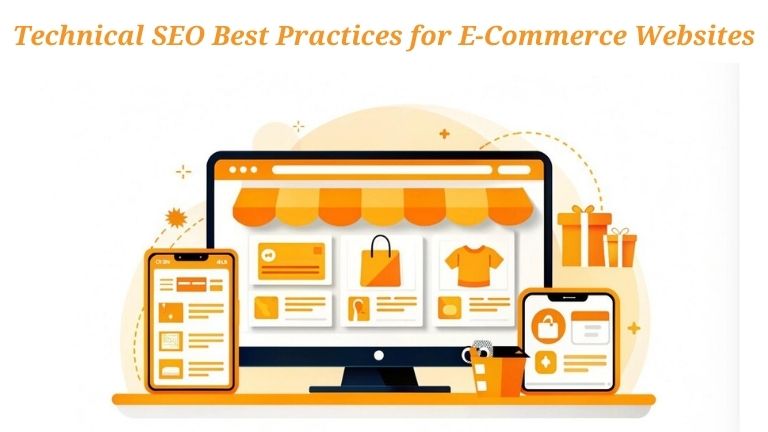
E-commerce websites are large and complex, often containing hundreds or thousands of pages that need optimization. To attract and retain customers, it’s crucial that your site is easily crawlable, fast, and user-friendly. This is where technical SEO becomes essential. In this post, we will cover the best technical SEO practices specifically for e-commerce websites to improve performance, visibility, and search rankings.
How Technical SEO Affects an E-Commerce Site
Technical SEO for e-commerce focuses on optimizing the site’s backend to improve search engine crawlability and user experience. Unlike content-based sites, e-commerce platforms face challenges such as managing numerous product pages, dealing with duplicate content, and handling large site architectures. Implementing proper technical SEO strategies helps ensure your store is easily discoverable by search engines, leading to higher organic traffic and better conversion rates.
Top Technical SEO Practices for E-commerce Sites
Optimize Site Architecture
- Keep a flat site structure: Important pages should be within 3 clicks from the homepage to enhance crawlability.
- Organize categories and product pages logically for better user and search engine navigation.
Implement Structured Data (Schema Markup)
- Use product schema to provide data like price, availability, and reviews for rich snippets.
- Add breadcrumbs to improve navigation and hierarchy understanding.
Optimize for Mobile Users
- Ensure responsive design for all devices.
- Optimize mobile page speed by compressing images and minimizing code.
Improve Site Speed
- Use Google PageSpeed Insights to identify slow elements.
- Compress images with formats like WebP to improve load times.
Handle Duplicate Content
- Use canonical tags for product variations to prevent duplicate content.
- Manage URL parameters with canonical tags or Google Search Console.
Optimize Product Pages
- Create unique product descriptions and avoid duplicate content.
- Use optimized, high-quality images with descriptive alt text.
Utilize Pagination Correctly
- Implement rel=“next” and rel=“prev” to manage pagination and prevent content duplication.
Optimize Internal Linking
- Use strategic internal links to distribute authority across the site.
- Use keyword-rich anchor text for internal links.
Fix Broken Links and 404 Errors
- Run regular audits to fix broken links.
- Create a custom 404 page with related product suggestions.
Use HTTPS for Security
- Secure your site with an SSL certificate to protect customer data and improve SEO.
Optimize URLs for SEO
- Create SEO-friendly URLs with relevant keywords.
- Avoid duplicating URLs for better crawl efficiency.
Manage Crawl Budget
- Use “noindex” tags for non-essential pages.
- Optimize your robots.txt file to control which parts of the site are crawlable.
Leverage Core Web Vitals
- Improve Largest Contentful Paint (LCP), First Input Delay (FID), and Cumulative Layout Shift (CLS) for a better user experience.
Monitor and Optimize Site Search
- Analyze internal search data and ensure search result pages are indexable without causing duplicate content.
Set Up and Monitor Google Search Console and Analytics
- Regularly monitor your site’s performance and track key e-commerce metrics to assess technical SEO improvements.
Conclusion
By implementing these technical SEO best practices on your e-commerce site, you can enhance search engine rankings, improve user experience, and boost sales. These strategies, from optimizing site speed to managing duplicate content and crawl budgets, will help keep your online store competitive.
If you find technical SEO challenging, consider using a specialized e-commerce SEO service to maximize your site’s potential. Remember, technical SEO is an ongoing process, so regular audits and updates are essential to stay ahead of the competition.
Also Read About
